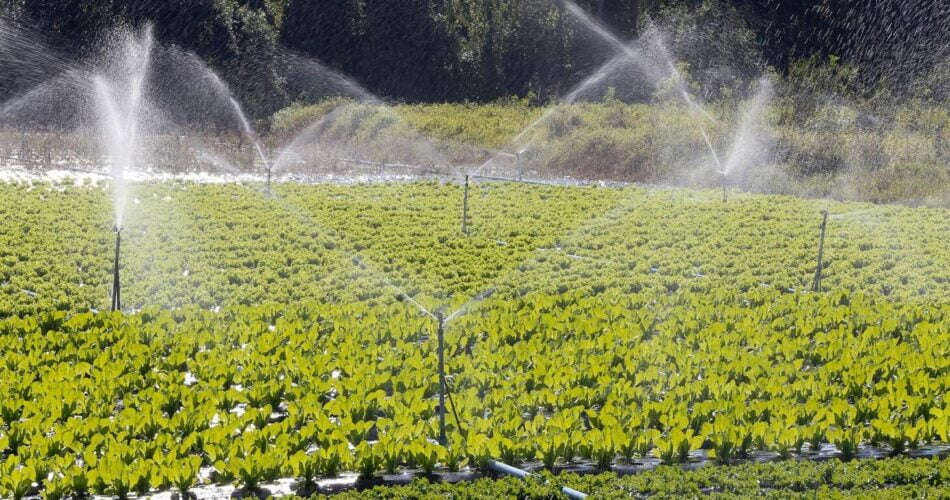Suggestions to Improve Agriculture Production and Productivity. From mechanization and irrigation expansion to promoting scientific cultivation methods, learn how to optimize farming practices for sustainable growth. These points outline key strategies
- Less Pressure of Population: It is imperative for agricultural progress that the population pressure on land is alleviated. This can be achieved through industrial development, providing alternative employment opportunities for those reliant on agriculture. Additionally, effective family planning initiatives should be implemented in rural areas to curb population growth.
- Irrigation Expansion: To diminish reliance on rainfall for irrigation, comprehensive irrigation systems need to be developed. This includes constructing canals from rivers and establishing wells and tube wells. Multipurpose schemes, such as creating ponds, can further mitigate irrigation challenges.
- Mechanization: Affordable agricultural machinery tailored to Indian farming conditions should be manufactured and made readily available for purchase and repair. Farmers need to be educated about these machines through exhibitions, and installment payment options should be provided to facilitate their acquisition.
- Adoption of Scientific Farming Practices: Promoting scientific farming techniques, such as crop rotation, is essential. Farmers who successfully adopt innovative methods should be recognized and incentivized. Moreover, research efforts should be intensified to enhance agricultural productivity by optimizing seed, fertilizer, and land usage.
- Access to High-Quality Seeds: Farmers should be educated about the importance of using high-quality seeds. Panchayats and cooperative societies should distribute these seeds and provide loans to small-scale farmers. Research into high-yielding seed varieties should be prioritized, and knowledge exchange with foreign counterparts should be encouraged.
- Efficient Manure Utilization: Farmers should be trained in producing green manure from organic sources like cow dung, compost, and green leaves. Utilization of oilseed cakes as fertilizer should also be promoted. Education campaigns should dispel myths surrounding fertilizer usage and encourage the adoption of alternative fertilizers like bone and fish meal. Additionally, domestic production of chemical fertilizers should be bolstered to ensure affordability and availability.
- Accessible Credit Facilities: Farmers need access to large loans at low-interest rates. Establishing cooperative credit societies and land development banks in rural areas can facilitate this. Expansion of commercial bank branches in villages is necessary, and the government should prioritize providing financial assistance to farmers during natural disasters.
- Land Reforms: Agricultural progress necessitates ending land-related disputes and ensuring land ownership for deserving farmers, with minimum landholding limits set. Efforts should target the resolution of issues like land erosion and waterlogging. Additionally, approximately 160 lakh hectares of cultivable land lie fallow in India, requiring improvements in farming practices. Tenancy rent rates should be standardized, with farmers retaining land rights as long as they fulfill tax obligations. Investments made towards land improvement should be reimbursed to farmers to prevent land encroachment. Read More About – Land Reforms
- Agricultural Marketing: Enhancing agricultural marketing channels is vital to ensure fair prices for crops. This involves establishing regular markets, promoting cooperative societies, and constructing warehouses for crop storage. Infrastructure development, including transportation networks, is crucial for efficient market access.
- Mixed Farming: Encouraging mixed farming practices involving crop cultivation, animal husbandry, and fruit and seed production concurrently can bolster agricultural sustainability. Prioritizing dairy farming can improve farmer livelihoods and provide nutritious food sources.
- Promoting Education: Farmers should have access to comprehensive and agriculture-specific education to mitigate conservatism and superstitions. Free education provisions can facilitate knowledge acquisition, enabling farmers to adopt innovative agricultural practices and increase productivity.
- Increased Public Sector Investment in Agriculture: Reversing the declining trend of public sector investment in agriculture is imperative. Increased investment in agricultural research, marketing infrastructure, irrigation facilities, soil testing services, and farmer advisory programs can spur agricultural development and innovation.
- Crop Insurance for Risk Mitigation: Indian farmers face various risks such as erratic weather, pests, and diseases, which can devastate crops and harm their economic stability. Implementing crop insurance schemes and pest management strategies can mitigate these risks and safeguard farmers’ livelihoods.
- Support for Small Farmers: Supporting small-scale farmers with access to new seeds, technologies, and equipment, alongside providing affordable loans, is essential for sustaining the Green Revolution and fostering agricultural development.
Read More: Explain the Importance of Agriculture in India
Read More: What is the New National Agriculture Policy of India?
Conclusion
The suggestions presented provide a comprehensive roadmap for enhancing agricultural production and productivity. By implementing measures such as irrigation expansion, mechanization, scientific cultivation methods, and support for small farmers, we can pave the way for sustainable growth in the agricultural sector. With collective effort and strategic planning, we can address challenges, maximize yields, and ensure food security for generations to come.
FAQ on Suggestions to Improve Agriculture Productivity
What is Agriculture Production?
Agricultural production refers to the process of growing crops, raising livestock, and cultivating other natural resources for human use.
How can we expand irrigation?
Expand irrigation by constructing more canals, wells, and tube wells, and implementing multipurpose schemes for efficient water distribution.
What is Land Reforms?
Land reforms involve changes in land ownership, distribution, and management aimed at achieving social and economic justice, improving agricultural productivity, and reducing rural poverty.
How can we Improve Agriculture Productivity?
Improving agricultural productivity involves implementing measures such as adopting modern farming techniques, utilizing high-quality seeds and fertilizers, expanding irrigation infrastructure, promoting mechanization, providing farmer education and training, and supporting research and development in agriculture.

[…] Read More: Suggestions to Improve Agriculture Production and Productivity […]